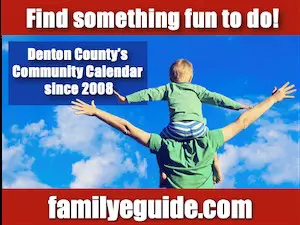Despite at least nine severe weather outbreaks in or near Denton County during April, rainfall remains well below normal just ahead of the big warm-up in May.
Here are the averages for April 2011 compared to our norms:
April 2011 average high was 82; normal high was 76.
April 2011 average low was 56, compared to the normal low of 53.
Rainfall for April 1-25 was 3.36”.
Rainfall from January 1 through April 25 was 5.47”.
Historically, Denton County normally receives 10 inches of rainfall from January through the end of April. Looking ahead, May should bring another 5 inches of rain into Denton County. We’ll need every drop.
Considering how dry and warm it has been so far this year, the explosion of multiple severe weather events across North Texas marks not a surprise (we discussed it last month) but a notable and sudden change from our previous pattern.
Severe weather, that is potentially damaging winds, hail, lightning and rainfall, threatened Denton County on at least nine dates including the 2nd, 3rd, 9th, 14th, 19th, 23rd, 24th, 25th and 26th. Notice many of the outbreaks were 5 and 6 days apart.
The severe weather was caused by a combination of factors; unusually warm temperatures, strong south winds that brought rich Gulf moisture into the area especially early in the morning, outflow boundaries of storms in Oklahoma, several weak cold fronts and the West Texas “dry line.”
The dry line is moving boundary between warm, dry air of West Texas and even New Mexico and the more humid air of the Gulf which often moves inland as far as Abilene and Wichita Falls. When high pressure in West Texas, an upper air disturbance or other frontal boundary nudges the dry line eastward at the right time in the right conditions, it create a very buoyant, unstable air mass in which storms can form and intensify rapidly.
May should follow the trend of 2011 so far; warmer and drier than normal. To put a finer point on it, the ‘warm signal’ is stronger than the ‘dry signal’ in our medium-range forecasts. That indicates we can expect several more severe weather outbreaks in May, possibly similar to the pattern established in April.
Two suggestions: Find out who activates the storm sirens in your area and for what reason(s). Different municipalities have different standards. Some reserve the sirens for tornadoes only while others sound their sirens for winds in excess of 70 mph and/or hail 3” or larger. And make sure you have some means of notification of warnings always at hand, whether it is a NOAA All Hazards radio, live local radio, live local TV or some other means. Weather warnings are better, more specific in time and space and much more useful and informative than ever. Please make sure they reach you in time.
Brad Barton is Chief Meteorologist of WBAP 820 AM/96.7 FM. Follow him online at www.WBAP.com and www.bradsweather.com.




















